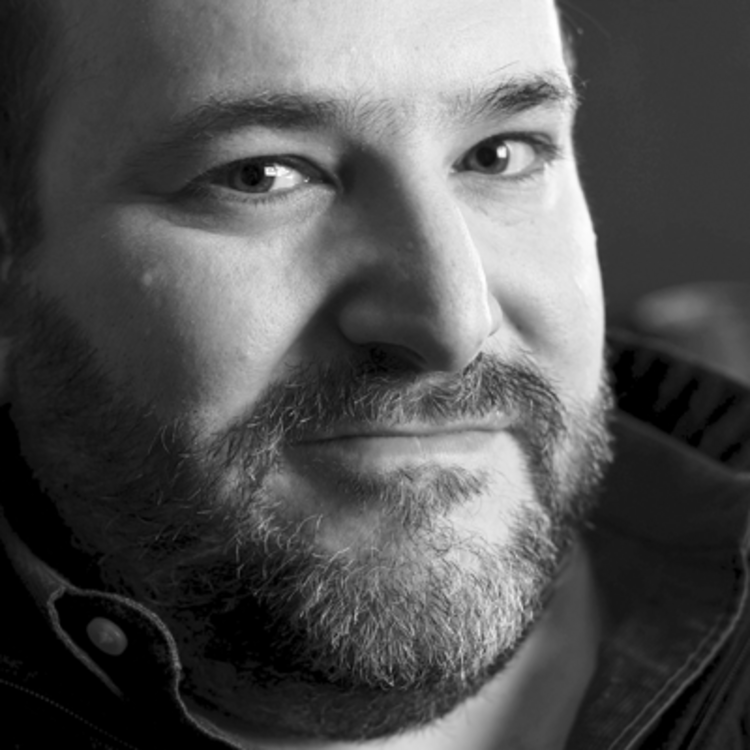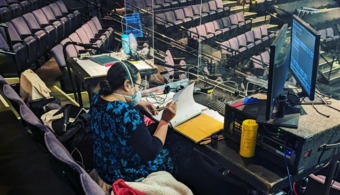Facing Facts on Tracking Parity and Diversity
Two years ago, in an attempt to make an honest assessment of the state of gender parity and diversity among the playwrights whose plays were being produced in Washington, DC, my home city, I undertook to complete a study. I tried very hard to be thorough. I counted every single production at every single theater I could find that opened within a one-year period at theaters located both within the city and in the surrounding suburbs. I researched each playwright individually, sending emails where I could to make sure my assumptions about gender and race weren’t off, and solicited the help of a partner to double-check my work. I was scientifically literate enough to know that my data weren’t going to be perfect, but I believed they were accurate enough to represent the city’s track record fairly. The resulting report—which suggested that 21 percent of the plays being produced that season were written by women and 14 percent by playwrights of color—was disseminated and discussed widely.
We repeated the study again the following year. I say “we” because I added two partners the second time around in an attempt to streamline the data gathering process and pay even more attention to double-checking. We fine-tuned the data points we looked at, analyzing race in more detail than we had the year before, and expanded our study to include directors. The bottom line: 25 percent of the plays were written by women and 15 percent by playwrights of color. (Much more detail, if you’re interested, is available here.) A few weeks ago, we began finalizing our plans for a third year of the study, which focused on bringing in two more data partners and beta-testing a database-driven version of our analysis. (We’ve relied on spreadsheets until now.) Colleagues in several cities—notably Minneapolis, Boston, and Los Angeles—reached out to me to begin discussions about replicating what we’d done in their regions. The hope was that by year four, we’d have a network of partners covering as much of the country as possible using rigorous techniques (and cross-checking each other’s work) to get accurate results for the entire American theater.
And then I began to realize we weren’t alone. I started to get emails from small non-profit organizations asking for my advice about how to track playwright data. And then the first big shoe dropped: I got an email letting me know that TCG was about to do a nationwide study of its own. At first, I was thrilled; I immediately offered to help. We’ve all been working hard—and entirely in an unpaid-service-to-the-community way—to build our ragtag data coalition, and the thought that an organization with significant national resources might take the project over was a tremendous relief. But then I got an email letting me know that the Dramatists Guild (full disclosure: I’m the Regional Representative for DC) and the Lilly Foundation are also entering the data collecting business. The Count, as they’ve called it, is going to look at the same things we’ve all been looking at and planning to analyze. Which led me to wonder: why aren’t we all just doing this analysis together?
Sure, there are differences—some of them important—between methodological approaches. The Guild and the Lilly Foundation are only looking at a three-year period; they’re also only examining larger theaters. Our project, by contrast, is intended to continue ad infinitum year after year until… well, until it’s not needed any more. We’re also looking at theaters of all sizes, though we haven’t (yet) included plays produced during the city’s Capital Fringe Festival. TCG, meanwhile, is presumably only going to examine member theaters… but instead of analyzing gender and race itself, the organization plans to rely on self-reported demographic data, which will undoubtedly make its results both more accurate and less comprehensive. The other organizations doing similar analyses, furthermore, might have different approaches, too. Great—let’s hear them all.
But let’s not do them all. I mean, sure if we had an independent body to ensure that all the projects we’re about to embark on were scientifically distinct and valid—and to fully fund them—why not? More would be more. But are we trying to do science here? I don’t think so. I think we’re trying to use science, in a modest way, in the service of self-examination and (in time) measuring our progress against the overarching goal of increasing gender parity and diversity. In other words, we really only need one study: a single, ongoing, comprehensive look at gender parity and diversity. One analysis that covers more than just TCG member theaters, more than just the nation’s largest (and most well-heeled) theaters, and more than a few cities. One data project that will allow us to say that we’ve really looked into every corner of the American theater and seen what’s there.
I don’t think any individual organization can get there. Maybe I’m wrong. (I do know that my own band of sisters and brothers can’t get there by itself, much though we’d like it to; our bootstraps can only be yanked up so far.) But I do think that if we all worked together, we could. My hope is that for an issue as important as this one, we’ll all extend our collaborative impulses beyond the rehearsal room. (We’re not always so good at that.) Instead of working at cross purposes and duplicating each other’s efforts, let’s pool our resources and face facts together. We’ll be stronger for having worked side-by-side, don’t you think? I do. Heck, that may even take us part of the way toward solving the gender parity and diversity problem itself.










Comments
The article is just the start of the conversation—we want to know what you think about this subject, too! HowlRound is a space for knowledge-sharing, and we welcome spirited, thoughtful, and on-topic dialogue. Find our full comments policy here
Glad to hear you say this in this forum Gwydion. For anyone who is counting (like me in the SF Bay Area), I also strongly hope that we are able to find ways to collaborate instead of duplicate.
To answer some of Julie's questions: here's the start of a list of who is counting where http://lafpi.com/2013/10/th... To me, a goal for this work is to quantify a problem that many of us 'feel' is happening but may not be able to clearly 'prove' is happening. In SF, I count writers, directors, actors by gender and break the actors down into union and non-union as well.
Over three years of counting, here are some definitions I've arrived at: My definition of director includes musical directors of musicals Writer includes writers of book/lyrics/music for musicals, but doesn't include translators nor does it include the original writer of adapted source material (I count George C. Wolfe as the writer of the play Spunk, not Zora Neale Hurston, for example). I also count those who self refer with the he/him pronoun as male and the she/her pronoun as female. When an artist uses other pronouns zhe/hir/they etc, I'm counting them as transgender. Actors doesn't include understudies and when 2 actors share a role, I count them both (often this happens with child actors). Sometimes, people who are listed in the program as musicians end up in the actor count, but not always -it depends on how they are integrated into the show - one of many reasons why my count is based on eyewitness reports from the audience or cast/crew/staff, and not from website data.
A personal long range goal for counting is that I don't have to do it anymore! That institutions regionally and nationally will take over counting as part of their support for the arts, and I no longer have to volunteer my time for this work, which I know I'm doing in a non-scientific, non-statistically sound fashion (I'm an actor with an excel spreadsheet and a gmail account).
For those who'd like to see what we're doing in SF, here's a link to the latest monthly count: http://worksbywomensf.wordp... I'm at [email protected] for more discussion and collaboration.
Again, thanks Gwydion for what you're doing in DC - I'm looking forward to more counting and a more accurate picture of the diversity of artists working (and maybe those who want to be working too?) via the counting that's about to get underway at an institutional level.
Excellent contribution to the discussion from Robert Montenegro here: http://bigthink.com/ideafee...
As part of the Boston group, I agree that we should all be trying to work together. We had a meeting here at StageSource last week, and as we began to unpack the work, the layers of the onion also became more apparent.
Some thoughts:
Can we all share a document listing who is working on this where?
Can we all share what our goals for our work are?
Can we all share what we are "counting" and how? Think about some shared definitions?
Can we think about some long range goals for the work?
In Boston/New England, we are thinking about other theater roles as well--starting with playwrights and directors, adding designers and stage managers. We had a long conversation about "how" to include actors--#'s of roles, contracts, etc? And how can we start to talk about what the roles are? We had many more questions than answers after our first meeting, but there is excitement about moving forward.
Looking forward to hearing what other folks think as well,
Julie Hennrikus/StageSource